The happy hunting ground is a concept of the afterlife associated with the Native Americans in the United States. [1] The phrase most likely originated with the British settlers' interpretation of the Indian description. [2]
The happy hunting ground is a concept of the afterlife associated with the Native Americans in the United States. [1] The phrase most likely originated with the British settlers' interpretation of the Indian description. [2]
The phrase first appears in 1823 in The Pioneers by James Fenimore Cooper:
"Hawk-eye! My fathers call me to the happy hunting-grounds." [3]
Historian Charles L. Cutler suggests that Cooper "either coined or gave currency to" the use of the phrase "happy hunting ground" as a term for the afterlife. [4] The phrase also began to appear soon after in the writing of Washington Irving. [5]
In 1911, Sioux physician Charles Eastman wrote that the phrase "is modern and probably borrowed, or invented by the white man." [6]
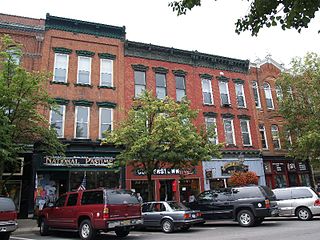
Cooperstown is a village in and the county seat of Otsego County, New York, United States. Most of the village lies within the town of Otsego, but some of the eastern part is in the town of Middlefield. Located at the foot of Otsego Lake in the Central New York Region, Cooperstown is approximately 60 miles west of Albany, 67 mi (108 km) southeast of Syracuse and 145 mi (233 km) northwest of New York City. The population of the village was 1,794 as of the 2020 census.

James Fenimore Cooper was an American writer of the first half of the 19th century, whose historical romances depicting colonial and indigenous characters from the 17th to the 19th centuries brought him fame and fortune. He lived much of his boyhood and the last fifteen years of life in Cooperstown, New York, which was founded by his father William Cooper on property that he owned. Cooper became a member of the Episcopal Church shortly before his death and contributed generously to it. He attended Yale University for three years, where he was a member of the Linonian Society.
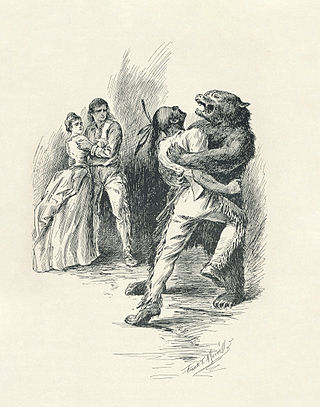
The Last of the Mohicans: A Narrative of 1757 is a historical romance novel written by James Fenimore Cooper in 1826. It is the second book of the Leatherstocking Tales pentalogy and the best known to contemporary audiences. The Pathfinder, published 14 years later in 1840, is its sequel; its prequel, The Deerslayer, was published a year after The Pathfinder. The Last of the Mohicans is set in 1757, during the French and Indian War, when France and Great Britain battled for control of North America. During this war, both the French and the British used Native American allies, but the French were particularly dependent, as they were outnumbered in the Northeast frontier areas by the British. Specifically, the events of the novel are set immediately before, during, and after the Siege of Fort William Henry.

James Kirke Paulding was an American writer and, for a time, the United States Secretary of the Navy. Paulding's early writings were satirical and violently anti-British, as shown in The Diverting History of John Bull and Brother Jonathan (1812). He wrote numerous long poems and serious histories. Among his novels are Konigsmarke, the Long Finne (1823) and The Dutchman's Fireside (1831). He is best known for creating the inimitable Nimrod Wildfire, the "half horse, half alligator" in The Lion of the West (1831), and as collaborator with William Irving and Washington Irving in Salmagundi. (1807–08). Paulding was also, by the mid-1830s, an ardent and outspoken defender of slavery, and he later endorsed southern secession from the union.

The Leatherstocking Tales is a series of five novels by American writer James Fenimore Cooper, set in the eighteenth-century era of development in the primarily former Iroquois areas in central New York. Each novel features Natty Bumppo, a frontiersman known to European-American settlers as "Leatherstocking", "The Pathfinder", and "the trapper". Native Americans call him "Deerslayer", "La Longue Carabine", and "Hawkeye".

Chingachgook is a fictional character in four of James Fenimore Cooper's five Leatherstocking Tales, including his 1826 novel The Last of the Mohicans. Chingachgook was a lone Mohican chief and companion of the series' hero, Natty Bumppo. In The Deerslayer, Chingachgook married Wah-ta-Wah, who had a son with him named Uncas, but died while she was still young. Uncas, who was at his birth "last of the Mohicans", grew to manhood but was killed in a battle with the Huron warrior Magua. Chingachgook died as an old man in the novel The Pioneers, which makes him the actual "last of the Mohicans," having outlived his son.
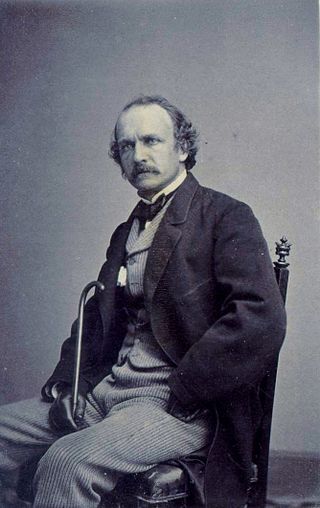
Felix Octavius Carr Darley, often credited as F. O. C. Darley, was an American illustrator, known for his illustrations in works by well-known 19th-century authors, including James Fenimore Cooper, Charles Dickens, Mary Mapes Dodge, Nathaniel Hawthorne, Washington Irving, George Lippard, Henry Wadsworth Longfellow, Donald Grant Mitchell, Clement Clarke Moore, Francis Parkman, Harriet Beecher Stowe and Nathaniel Parker Willis.
The Society of American Indians (1911–1923) was the first national American Indian rights organization run by and for American Indians. The Society pioneered twentieth century Pan-Indianism, the movement promoting unity among American Indians regardless of tribal affiliation. The Society was a forum for a new generation of American Indian leaders known as Red Progressives, prominent professionals from the fields of medicine, nursing, law, government, education, anthropology and ministry. They shared the enthusiasm and faith of Progressive Era white reformers in the inevitability of progress through education and governmental action.

Nature writing is nonfiction or fiction prose or poetry about the natural environment. Nature writing encompasses a wide variety of works, ranging from those that place primary emphasis on natural history facts to those in which philosophical interpretation predominate. It includes natural history essays, poetry, essays of solitude or escape, as well as travel and adventure writing.

The capture and rescue of Jemima Boone and the Callaway girls is a famous incident in the colonial history of Kentucky. Three girls were captured by a Cherokee-Shawnee raiding party on July 14, 1776, and rescued three days later by Daniel Boone and his party, celebrated for their success. The incident was portrayed in 19th-century literature and paintings: James Fenimore Cooper created a fictionalized version of the episode in his novel The Last of the Mohicans (1826) and Charles Ferdinand Wimar painted The Abduction of Boone's Daughter by the Indians.

The Deerslayer, or The First War-Path (1841) was James Fenimore Cooper's last novel in his Leatherstocking Tales. Its 1740–1745 time period makes it the first installment chronologically and in the lifetime of the hero of the Leatherstocking tales, Natty Bumppo. The novel's setting on Otsego Lake in central, upstate New York, is the same as that of The Pioneers, the first of the Leatherstocking Tales to be published (1823). The Deerslayer is considered to be the prequel to the rest of the series. Fenimore Cooper begins his work by relating the astonishing advance of civilization in New York State, which is the setting of four of his five Leatherstocking Tales.
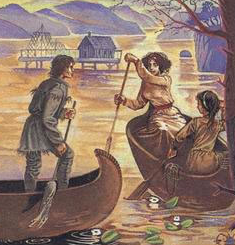
Nathaniel "Natty" Bumppo is a fictional character and the protagonist of James Fenimore Cooper's pentalogy of novels known as the Leatherstocking Tales.
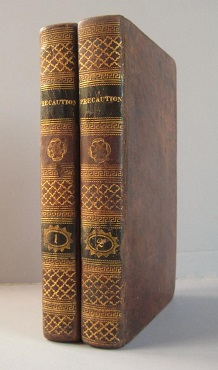
Precaution (1820) is the first novel by American author James Fenimore Cooper.

Petalesharo was a Skidi Pawnee chief or brave who rescued an "Ietan" girl, that is Comanche girl, from a ritual human sacrifice around 1817 and earned publicity for his act in national newspapers. In 1821, he was one of numerous Great Plains tribal chiefs to go to Washington, D.C. as part of the O'Fallon Delegation where they met President James Monroe.
The Knickerbocker Group was a somewhat indistinct group of 19th-century American writers. Its most prominent members included Washington Irving, James Fenimore Cooper and William Cullen Bryant. Each was a pioneer in general literature—novels, poetry and journalism.
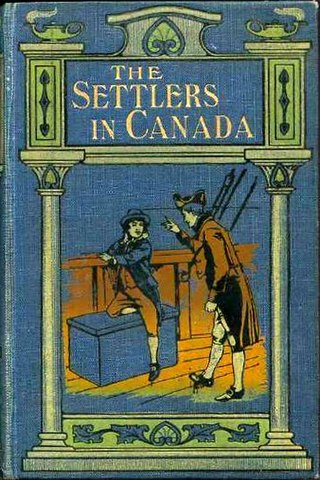
The Settlers in Canada is a children's novel written by Frederick Marryat, and published in 1844. The novel is set in the wilderness of Upper Canada in the 1790s. It describes the adventures of an immigrant family who settle near Lake Ontario, despite the threats from the native people and wild animals.

The word "how" is a pop culture anglicization of the Lakota word háu, a Lakota language greeting by men to men. The term how is often found in stereotypical and outdated depictions of Native Americans, made by non-Natives, in some Hollywood movies and various novels, e.g. those of James Fenimore Cooper or Karl May.
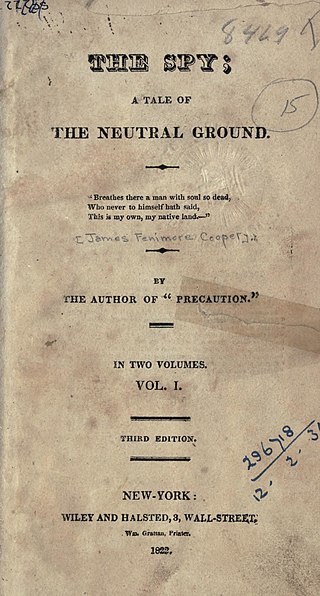
The Spy: a Tale of the Neutral Ground is a novel by American writer James Fenimore Cooper. His second novel, it was published in 1821 by Wiley & Halsted. The plot is set during the American Revolution and was inspired in part by the family friend John Jay. The Spy was successful and began Cooper's reputation as a popular and important American writer.
The Monikins is an 1835 novel, written by James Fenimore Cooper. The novel, a beast fable, was written between his composition of two of his more famous novels from the Leatherstocking Tales, The Prairie and The Pathfinder. The critic Christina Starobin compares the novel's plot to Jonathan Swift's Gulliver's Travels. The novel is a satire, narrated by the main character, the English Sir John Goldencalf. Goldencalf and the American captain Noah Poke travel on a series of humorous adventures to an Antarctic archipelago inhabited by a race of civilized monkeys.

The Oak Openings; or, The Bee Hunter is an 1848 novel by James Fenimore Cooper. The novel focuses on the activities of professional honey-hunter Benjamin Boden, nicknamed "Ben Buzz". The novel is set in Kalamazoo, Michigan's Oak Opening, a wooded prairie that still exists in part today, during the War of 1812.